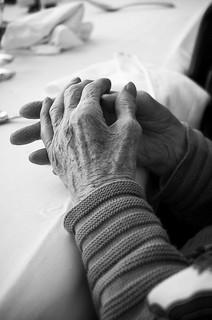In battling elder abuse, one of the most important weapons we have is awareness. Our San Francisco elder abuse law firm represents elder abuse victims and also works to prevent future abuse by using this blog to spread awareness about the many forms of elder abuse. Among the lessons we hope to share is the fact that not all bruises are physical. Emotional abuse may not leave a visible scar, but it is still a very real form of abuse. We take emotional elder abuse very seriously, representing its victims and discussing its breadth to help community members recognize when it occurs.
Emotional Elder Abuse Explained
 Emotional abuse can occur in any setting, including individual homes as well as our nation’s senior care facilities. Seniors, like everyone else, have a right to be treated with dignity and respect. Denying someone that basic right, treating someone as less than human, is the hallmark of emotional abuse. Focusing on abuse in a care center environment, some of the many forms of emotional abuse include: Isolation (ex. preventing a resident from speaking/meeting with family); Manipulation (ex. telling the resident that meals will be delayed if he asks for assistance during the staff member’s shift); Degradation (ex. making fun of a patient’s inability to control her bladder); and Threats (ex. telling a resident she won’t get help if she has another bathroom accident). Often emotional abuse builds on itself, such as threatening a patient if she reports family visits being withheld.
Emotional abuse can occur in any setting, including individual homes as well as our nation’s senior care facilities. Seniors, like everyone else, have a right to be treated with dignity and respect. Denying someone that basic right, treating someone as less than human, is the hallmark of emotional abuse. Focusing on abuse in a care center environment, some of the many forms of emotional abuse include: Isolation (ex. preventing a resident from speaking/meeting with family); Manipulation (ex. telling the resident that meals will be delayed if he asks for assistance during the staff member’s shift); Degradation (ex. making fun of a patient’s inability to control her bladder); and Threats (ex. telling a resident she won’t get help if she has another bathroom accident). Often emotional abuse builds on itself, such as threatening a patient if she reports family visits being withheld.
 San Francisco Injury Lawyer Blog
San Francisco Injury Lawyer Blog



 As your San Francisco nursing home abuse law firm, we understand that aging individuals and their families often face many tough decisions. It is difficult to come to the conclusion that your loved one can no longer live alone, especially when the loved one has long been the caretaker and suddenly finds him or herself in need of care. When facing this reality, it is important to be aware of the different levels of
As your San Francisco nursing home abuse law firm, we understand that aging individuals and their families often face many tough decisions. It is difficult to come to the conclusion that your loved one can no longer live alone, especially when the loved one has long been the caretaker and suddenly finds him or herself in need of care. When facing this reality, it is important to be aware of the different levels of  According to the
According to the  A study published in the April 8 issue of the
A study published in the April 8 issue of the